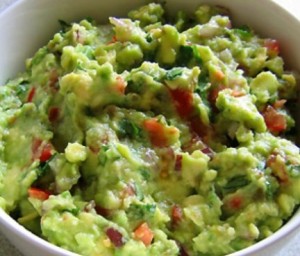The U.S. Centers for Disease Control reports in Morbidity and Mortality Weekly that advances in water management and sanitation have substantially reduced waterborne disease in the United States, although outbreaks continue to occur (1). Public health agencies in the U.S. states and territories* report information on waterborne disease outbreaks to the CDC Waterborne Disease and Outbreak Surveillance System (http://www.cdc.gov/healthywater/surveillance/index.html).
 For 2011–2012, 32 drinking water–associated outbreaks were reported, accounting for at least 431 cases of illness, 102 hospitalizations, and 14 deaths. Legionella was responsible for 66% of outbreaks and 26% of illnesses, and viruses and non-Legionella bacteria together accounted for 16% of outbreaks and 53% of illnesses. The two most commonly identified deficiencies† leading to drinking water–associated outbreaks were Legionella in building plumbing§ systems (66%) and untreated groundwater (13%). Continued vigilance by public health, regulatory, and industry professionals to identify and correct deficiencies associated with building plumbing systems and groundwater systems could prevent most reported outbreaks and illnesses associated with drinking water systems.
For 2011–2012, 32 drinking water–associated outbreaks were reported, accounting for at least 431 cases of illness, 102 hospitalizations, and 14 deaths. Legionella was responsible for 66% of outbreaks and 26% of illnesses, and viruses and non-Legionella bacteria together accounted for 16% of outbreaks and 53% of illnesses. The two most commonly identified deficiencies† leading to drinking water–associated outbreaks were Legionella in building plumbing§ systems (66%) and untreated groundwater (13%). Continued vigilance by public health, regulatory, and industry professionals to identify and correct deficiencies associated with building plumbing systems and groundwater systems could prevent most reported outbreaks and illnesses associated with drinking water systems.
This report provides information on drinking water–associated¶ waterborne disease outbreaks in which the first illness occurred in 2011 or 2012** (http://www.cdc.gov/healthywater/surveillance/drinking-surveillance-reports.html), and summarizes outbreaks reported to the Waterborne Disease and Outbreak Surveillance System through the electronic National Outbreak Reporting System (http://www.cdc.gov/nors/about.html) as of October 30, 2014. For an event to be defined as a waterborne disease outbreak, two or more persons must be linked epidemiologically by time, location of water exposure, and case illness characteristics; and the epidemiologic evidence must implicate water as the probable source of illness. Data submitted for each outbreak include 1) the number of cases, hospitalizations, and deaths; 2) the etiologic agent (confirmed or suspected); 3) the implicated water system; 4) contributing factors in the outbreak; and 5) the setting of exposure.
Karlyn D. Beer, PhD1,2; Julia W. Gargano, PhD2; Virginia A. Roberts, MSPH2; Vincent R. Hill, PhD2; Laurel E. Garrison, MPH3; Preeta K. Kutty, MD3; Elizabeth D. Hilborn, DVM4; Timothy J. Wade, PhD4; Kathleen E. Fullerton, MPH2; Jonathan S. Yoder, MPH, MSW2






 "Small farms produce the safest food available, without regulation. … Just like family farms brought us out of the Great Depression, they can bring us out of the food safety problem and this recession, if they are allowed to thrive.”
"Small farms produce the safest food available, without regulation. … Just like family farms brought us out of the Great Depression, they can bring us out of the food safety problem and this recession, if they are allowed to thrive.”
 The decline, moreover, came even as the number of people cruising continued to rise. The Cruise Lines International Association says the industry carried 13.2 million passengers in 2008, the last year for which data is available, up from 12.6 million in 2007 and 12.0 million in 2006.
The decline, moreover, came even as the number of people cruising continued to rise. The Cruise Lines International Association says the industry carried 13.2 million passengers in 2008, the last year for which data is available, up from 12.6 million in 2007 and 12.0 million in 2006.(1).jpg) Because of a historical risk, leafy greens have been identified by the US FDA as a priority with in fresh produce safety (along with tomatoes, melons, sprouts and fresh herbs).
Because of a historical risk, leafy greens have been identified by the US FDA as a priority with in fresh produce safety (along with tomatoes, melons, sprouts and fresh herbs).

 Purpose – This study used a novel video capture system to observe the food preparation practices of 41 consumers – 21 primary meal preparers and 20 adolescents – in a mock domestic kitchen using uncooked, frozen, breaded chicken products, and to determine if differences exist between consumers’ reported safe food handling practices and actual food handling behavior as prescribed on current product labels.
Purpose – This study used a novel video capture system to observe the food preparation practices of 41 consumers – 21 primary meal preparers and 20 adolescents – in a mock domestic kitchen using uncooked, frozen, breaded chicken products, and to determine if differences exist between consumers’ reported safe food handling practices and actual food handling behavior as prescribed on current product labels..jpg) Milk and dairy products are cornerstones of a healthy diet. However, if those products are consumed unpasteurized, they can present a serious health hazard because of possible contamination with pathogenic bacteria. An average of 5.2 outbreaks per year linked to raw milk have occurred in the United States between 1993 and 2006—more than double the rate in the previous 19 years, according to co-authors Jeffrey T. LeJeune and Päivi J. Rajala-Schultz of the College of Veterinary Medicine in Columbus, Ohio. …
Milk and dairy products are cornerstones of a healthy diet. However, if those products are consumed unpasteurized, they can present a serious health hazard because of possible contamination with pathogenic bacteria. An average of 5.2 outbreaks per year linked to raw milk have occurred in the United States between 1993 and 2006—more than double the rate in the previous 19 years, according to co-authors Jeffrey T. LeJeune and Päivi J. Rajala-Schultz of the College of Veterinary Medicine in Columbus, Ohio. …